#chicunamictlán
Photo

“La ultima puerta. Nivel 9”/ “The last door. Level 9” This piece is part of my show THE WALK HOME II at @cactusgallery check it out! Link in bio #thewalkhome #cactusgallery #chicunamictlán #mictlán #mesoamerica #mitologia #azteca #mexicanart #mesoamerican #mythology #aztec #neomexicanismos #artemexicano #mictlantecuhtli #soul #journey #afterlife #underworld #ancientgods #lifeanddeath #contemporaryart #figurativeart #surrealart #latinamericanart #latinaartist #womanartist #mexicomagico #folksurrealism #dayofthedead #diademuertos https://www.instagram.com/p/Cjb4IDXjKCp/?igshid=NGJjMDIxMWI=
#thewalkhome#cactusgallery#chicunamictlán#mictlán#mesoamerica#mitologia#azteca#mexicanart#mesoamerican#mythology#aztec#neomexicanismos#artemexicano#mictlantecuhtli#soul#journey#afterlife#underworld#ancientgods#lifeanddeath#contemporaryart#figurativeart#surrealart#latinamericanart#latinaartist#womanartist#mexicomagico#folksurrealism#dayofthedead#diademuertos
75 notes
·
View notes
Text
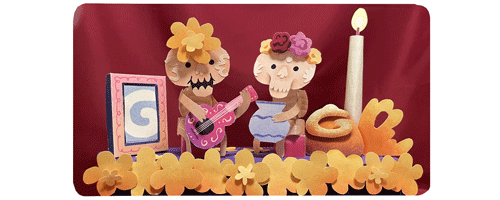
Day of the Dead 2023
Date: November 1, 2023
Today’s hand-crafted paper automata Doodle celebrates Day of the Dead, or Día de los Muertos, in Mexico. This holiday, celebrated from November 1st through November 2nd and is a time for families to honor loved ones who have passed. On this day each year, it’s said that the border between the spirit world and living world dissolves, allowing the souls of the dead to reunite with their families.
Día de los Muertos has indigenous roots dating back more than 3,000 years ago to pre-Columbian Mesoamerican civilizations like the Aztec, Mayan, and Nahua. It was believed that after death, a person had to complete nine challenges to reach the final resting place of Chicunamictlán. Families would place altares (offerings) of food, water, tools, and other symbolic items to aid their loved ones’ journeys in the afterlife.
To celebrate, many Mexicans paint their faces with calaveras (skulls). Women wear colorful dresses or blouses and handmade flower crowns, while men dress in suits and hats. Families bring ofrendas such as pictures and personal items of the departed to altars adorned with marigolds. These bright orange flowers line the pathway back to the living and attract souls with their scent and vibrance. Feasts of tamales, pan de muerto, calaveras de azúcar, and other Mexican delicacies are also served throughout the country.
Día de los Muertos is a colorful and lively occasion for remembering and celebrating those who have passed on from this world. It’s an intimate dedication to the deceased, and an invaluable time for families to reunite with their loved ones.
Check out the behind-the-scenes process for
today’s Doodle artwork by Doodler, Helene Leroux
Early Doodle Draft
Location:
Argentina,
Chile,
Denmark,
Iceland,
Ireland,
Peru,
Puerto Rico,
U.S. Virgin Islands,
United Kingdom,
United States,
Uruguay
Tags:
@GoggleDoddle
0 notes
Text
BLOG- WEEK 5 (SPANISH)
El día de los Muertos
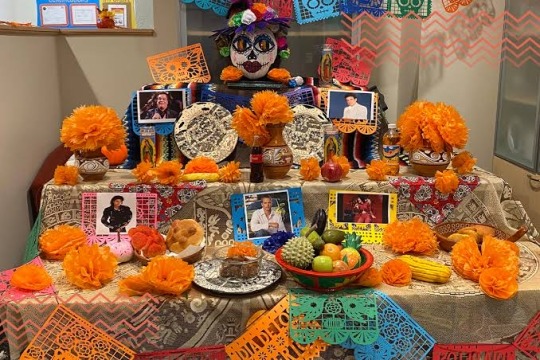
El Día de los Muertos mexicano, también conocido como El Da de los Muertos, se celebra del 31 de octubre al 2 de noviembre. Las familias reciben a los espíritus de sus seres queridos fallecidos en una breve fiesta. Las puertas del cielo se abren en la medianoche del 31 de octubre permitiendo el paso de los espíritus de los niños. Los espíritus de los adultos pueden hacer lo mismo el 2 de noviembre durante 24 horas junto a sus familias.
Las festividades del Día de los Muertos que se celebran en el México actual, así como por los descendientes de mexicanos en Estados Unidos y otras naciones, tienen su origen en rituales de la Mesoamérica precolombina que se remontan a unos 3.000 años. Los nahuas, que incluían a los aztecas y vivían en lo que hoy es el centro de México, tenían una visión cíclica del universo y veían la muerte como una parte esencial y constante de la vida.
La tradición moderna del Día de los Muertos se inspiró en la de Chicunamictlán. El alma de una persona tenía que atravesar nueve desafiantes niveles y durante muchos años para llegar al reino del descanso final. Durante los ritos nahuas en honor a los muertos, los familiares llevaban comida, agua y herramientas para ayudar a los difuntos en este difícil camino.
0 notes
Text
Día de muertos
Day of the Dead (Dia De Los Muertos) is a two day Mexican holiday (from November 1st to November 2nd) that reunites the living and dead. Families create ofrendas (Offerings) to honor their departed family members that have passed. These altars are decorated with bright yellow marigold flowers (known as cempasuchil) photos of the departed, and the favorite foods and drinks of the one being honored. The offerings are believed to encourage visits from the land of the dead as the departed souls hear their prayers, smell their foods and join in the celebrations!
El Día de Muertos es una fiesta mexicana que se celebra en los dos primeros días de noviembre, que reúne a los vivos y a los muertos. Las familias crean ofrendas (Ofrendas) para honrar a sus familiares fallecidos. Estos altares están decorados con flores de cempasúchil, fotos de los difuntos y las comidas y bebidas favoritas de la persona honrada. Se cree que las ofrendas atraen las visitas desde la tierra de los muertos mientras las almas de los difuntos escuchan sus oraciones, huelen sus alimentos y se unen a las celebraciones.

The roots of the Day of the Dead go back some 3,000 years, to the rituals honoring the dead in pre-Columbian Mesoamerica. The Aztecs and other Nahua people living in what is now central Mexico held a cyclical view of the universe, and saw death as an integral, ever-present part of life.
El origen de Día de Muertos, yace hace aproximadamente 3000 años, con los rituales mesoamericanos para honrar a los muertos. Los Aztecas, y las demás culturas que vivían en lo que ahora es el centro de México, tenían una visión cíclica sobre el universo, veían la muerte como parte del ciclo de la vida.
Upon dying, a person was believed to travel to Chicunamictlán, the Land of the Dead. Only after getting through nine challenging levels, a journey of several years, could the person’s soul finally reach Mictlán, the final resting place. In Nahua rituals honoring the dead, traditionally held in August, family members provided food, water and tools to aid the deceased in this difficult journey. This inspired the contemporary Day of the Dead practice in which people leave food or other offerings on their loved ones’ graves, or set them out on makeshift altars called ofrendas in their homes.
Después de que una persona fallecía, se creía que ésa viajaba al Chicunamictlán, la Tierra de los Muertos. Solo después de superar los nueve niveles desafiantes, un viaje de varios años, el alma de la persona finalmente podía llegar al Mictlán, el lugar de descanso final. En los rituales Nahuas en honor a los muertos, que tradicionalmente se llevaban a cabo en agosto, los miembros de la familia proporcionaron comida, agua y herramientas para ayudar a los fallecidos en este difícil viaje. Esto inspiró la práctica contemporánea del Día de los Muertos en la que las personas dejan comida u otras ofrendas en las tumbas de sus seres queridos, o las colocan en altares (ofrendas) en sus casas.

Símbolos del Día de muertos:
Calaveras/Skull: The skulls are often drawn with a smile as to laugh at death itself. They take many forms such as sugar candies, clay decorations, and most memorable: face painting.
En las calaveras comúnmente se dibuja una sonrisa para representar que se está riendo de la muerte. Hay calaveritas de azúcar y de barro, pero la más conocida es la que se pitan en la cara.
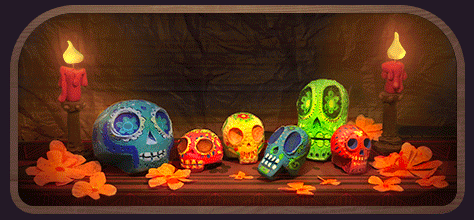
Cempasúchil/Mexican Marigolds: Marigolds are believed to be the pathways that guide the spirits to their ofrendas.
Se cree que las flores de cempasúchil son los caminos que guían a los espíritus hacia sus ofrendas.

Ofrenda/ Offering: It’s a collection of offerings dedicated to the person being honored.
Es una colección de ofrendas (comida, dulces, bebidas, regalos, etc.) dedicadas a la persona honrada.

Hope you’d like know a little bit more of this amazing holiday!
Below you’ll find a video of one of the most representative songs of Día de Muertos.
youtube
6 notes
·
View notes
Text
Hallowe'en
From October 31 begins an eve whose end will be on November 2, during these dates we celebrate and remember all the brave whose time stopped
All Saints Day
All Saints' Eve is a feast that began on October 31, ending on November 1 and November 2, the Day of the Dead is celebrated, although these dates were slightly modified by the passage of time; on this page you will be able to know the differences and history of this eve
Now, the tribe of the Celts existed long before Christ, and one of their most famous contributions in the world was Halloween (Samhain) or All Saints' Day, they celebrated it to end the end of summer, what they did was make parties and bring offerings to the dead, since they believed that there were evil spirits, that is why they brought them offerings and human, vegetable and animal sacrifices. Although this was stopped practicing because the Romans did not like so many people dying, with the passage of time Pope Gregory III (731-741) changed his name to All Saints Day, this made the Deltas very happy, this The tradition spread throughout the world and when the Irish immigrated to the United States they were taught legends such as Jack O'o Lantern. As an interesting fact, the legend of Jack 'O Lantern told that he had a turnip embers of fire (since he could not go to heaven or hell, so he seeks his rest alone) but having a surplus of pumpkins in the United States they decided to make them holes and put a candle inside it.
Therefore, referring to something more spiritual that day, in the Christian religion it is necessary to celebrate all the people who reach heaven or paradise as it is known, as it is known in the Christian-Catholic religion, since a saint himself is someone which is pure enough to enter, not just the caconic sates of the Vatican. This eve usually creates a lot of controversy in orthodox believers of Christian Catholic religions or here in Mexico due to the curious translation to "Halloween" this because of the pagan costrumbes of the Celts before the arrival of Christianity and because of the marketing over time .
Solemnity of the Saints
Following the same theme as on October 31, all those people who reached paradise are celebrated, whether they are holy canons of the Vatican or not, but during these dates children who died in a tragic way, violence, accidents without having been baptisms, but in itself the deceased who overcame purgatory and have been sanctified enjoying the presence of God are celebrated.
In the primitive churches each martyr was celebrated on his date of death and place of death but after the persecution of Diocletian, the number of martyrs increased so much that there did not have to be a feast on a common day to celebrate them all, which she was chosen May 13 for the Syrians or the first Sunday after Pentecost according to Saint John Chrysostom. Later, Pope Gregory III (731-741) consecrated a chapel in the Vatican to worship the saints who were previously honored in cemeteries and catacombs that had been left in disuse. This oratory was dedicated "to the Savior, to Saint Mary, to the Apostles, to the martyrs, to the confessors and to all the righteous souls," and it had a choir of monks say a supplementary Office every day in honor of the saints whose birth was every day. From the combination of these traditions with that of the votive masses in memory of many or all the saints, a tradition emerged that was already ingrained by the 8th century, although the date was not always the same. Pope Gregory IV unified it on the first of November.
A ruling that can be presented, in a more theoretical way, is that if the child was not baptized and committed a sin, whether mortal or venial, he could not enter paradise and would wound himself to a place of punishment for his sins, I hear it, although they were good. in life they could never be saints this according to the chaotic-orthodox Christian church
Day of the Dead
This date passes on November 2 and is devoted to people who died in general, although this day has a background and a story that happened with the Mexica, where they celebrated the dead and collect copsehcas, just as the Celts planned it on their own. timepo and region. He would sing to the Christian religion where the behavior of a person in his life is rewarded or punished, for the Mexica there was no such thing, but rather beliefs that the destiny of the bad people would depend on the type of death they had experienced.
The Mexica believed that the afterlife of the deceased could have four destinations Tlalocan or paradise of Tlaloc, god of rain. Omeyocán, paradise of the sun, presided over by Huitzilopochtli, the god of war. Only the killed in combat, the captives who sacrificed themselves, and the women who died in childbirth came to this place.
The dead who went to Omeyocan paradise of the sun, presided over by Huitzilopochtli, the god of war. Only the killed in combat, the captives who sacrificed themselves, and the women who died in childbirth came to this place. The dead who went to the Omeyocan, after four years, returned to the world, turned into birds with beautiful multi-colored feathers. Mictlán, intended for those who died a natural death. This place was inhabited by Mictlantecuhtli and Mictecacíhuatl, lord and mistress of death. Chichihuacuauhco, place where the dead children went before their consecration to the water where there was a tree from whose branches milk dripped, so that they would feed. In this way, life will be reborn from death. The road to get to Mictlán was very tortuous and difficult, because to get there the souls had to travel through different places for four years. After this time, the souls arrived at Chicunamictlán, a place where the souls of the dead rested or disappeared.
When the Spanish arrived in America in the 16th century, they brought their own traditional celebrations to commemorate the deceased, where the dead were remembered on All Saints' Day. By converting the natives of the New World, a syncretism was created that mixed European and pre-Hispanic traditions, making the Catholic festivities of All Saints and All Souls coincide with the similar Mesoamerican festival, creating the current Day of the Dead. .
Praise the dead
"Where would we correctly begin the praise of some brave men, who in life made their loved ones glad with their virtue and who have accepted death in exchange for the salvation of the living? I believe that it is necessary to make a praise of a natural order in which they have been brave. They were brave because they were born of brave, We praise, therefore, firstly their nobility of birth and, secondly, their upbringing and education. " -Aspasia
(comic page)
A few years ago in the city of Gotham, there's was a tragedy in the Falcons family, affecting most part of their business of mafia, also a tragic accident for a district attorney Dent... during this event called "The Long HALLOWEEN" where a killer, called the "Holiday Killer" that killed public figures every Holiday no Julian Day, there was different people who we're blame like Alberto Falcons, Catwoman and even more public figures..
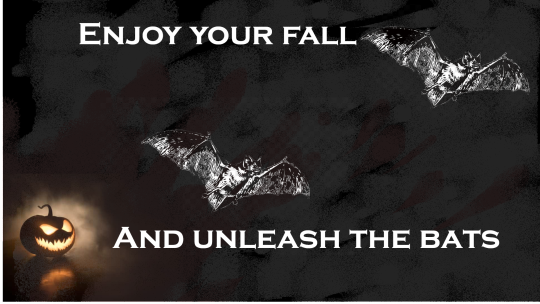
This October... unleash all the bats you hide!
#the long Halloween#Halloween#gotham rp#GothamRadioKid#Batman#Falcone#batman#Dia de muertos#day of the death#Mexica#México#death#October#Christian#all saint day#holiday killer#Aspasia#bruce wayne#history#Celts#Christ#November
4 notes
·
View notes
Photo

02 de NOVIEMBRE La muerte entre los aztecas Los mexicas creían que la vida ultraterrena del difunto podía tener cuatro destinos: Tlalocan o paraíso de Tláloc, dios de la lluvia. A este sitio se dirigían aquellos que morían en circunstancias relacionadas con el agua: los ahogados, los que morían por efecto de un rayo, los que morían por enfermedades como la gota o la hidropesía, la sarna o las bubas, así como también los niños sacrificados al dios. El Tlalocan era un lugar de reposo y de abundancia. Omeyocán, paraíso del sol, presidido por Huitzilopochtli, el dios de la guerra. A este lugar llegaban sólo los muertos en combate, los cautivos que se sacrificaban y las mujeres que morían en el parto. El Omeyocan era un lugar de gozo permanente, en el que se festejaba al sol y se le acompañaba con música, cantos y bailes. Los muertos que iban al Omeyocan, después de cuatro años, volvían al mundo, convertidos en aves de hermosas plumas multicolores. Mictlán, destinado a quienes morían de muerte natural. Este lugar era habitado por Mictlantecuhtli y Mictecacíhuatl, señor y señora de la muerte. Era un sitio muy oscuro, sin ventanas, del que ya no era posible salir. Chichihuacuauhco, lugar a donde iban los niños muertos antes de su consagración al agua donde se encontraba un árbol de cuyas ramas goteaba leche, para que se alimentaran. Los niños que llegaban aquí volverían a la tierra cuando se destruyese la raza que la habitaba. De esta forma, de la muerte renacería la vida. El camino para llegar al Mictlán era muy tortuoso y difícil, pues para llegar a él las almas debían transitar por distintos lugares durante cuatro años. Luego de este tiempo, las almas llegaban al Chicunamictlán, lugar donde descansaban o desaparecían las almas de los muertos. Para recorrer este camino, el difunto era enterrado con un perro llamado Xoloitzcuintle, el cual le ayudaría a cruzar un río y llegar ante Mictlantecuhtli, a quien debía entregar, como ofrenda, atados de teas y cañas de perfume, algodón (ixcátl), hilos colorados y mantas. Quienes iban al Mictlán recibían, como ofrenda, cuatro flechas y cuatro teas atadas con hilo de algodón. #diademuertos #festejo #02denovembre #iceeac (en Fundación ICEE) https://www.instagram.com/p/CHGqqhCLTGZ/?igshid=3i553j1ktq7t
0 notes
Photo
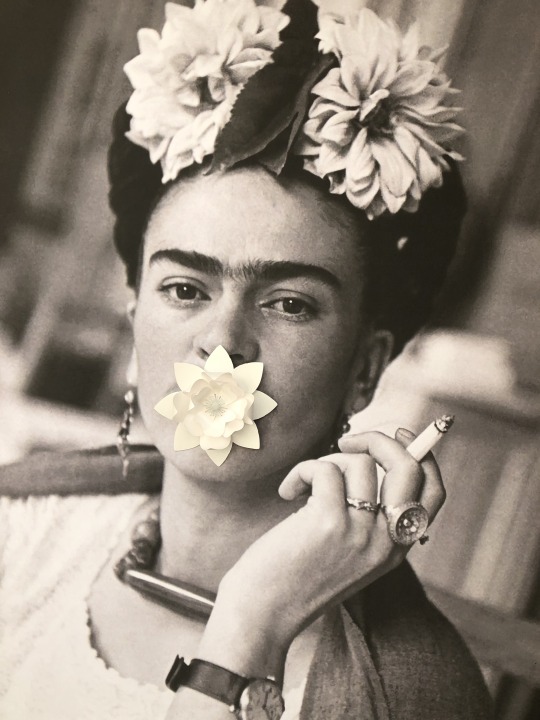



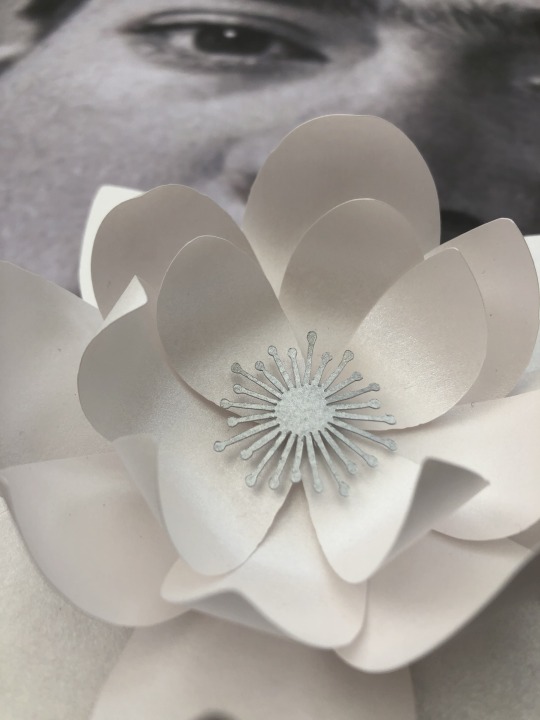

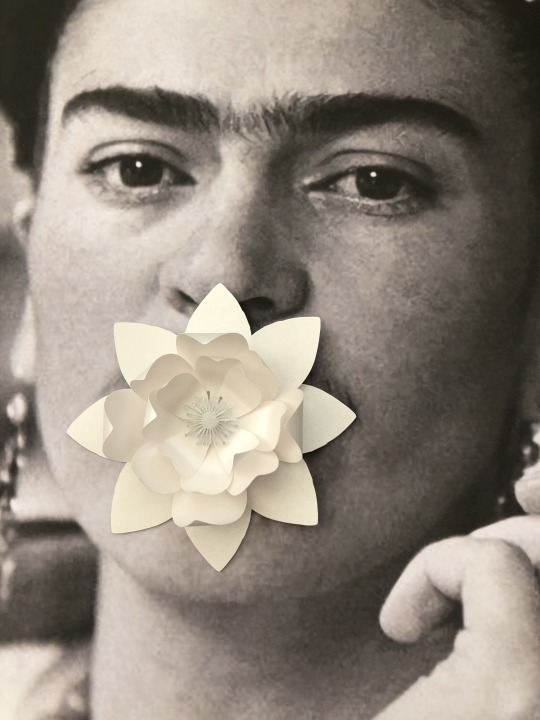

Final piece- 2
Frida Kahlo is a Mexican Painter and all this time I have been making connections to biblical art and shrines, I didn’t even think to look at her own culture and how this may or may not have had an impact of her life’s work.
Day of the Dead is a celebration in Mexico where families invite the souls of their loved ones back for a reunion. A quote from the History.com’s article “Day of the Dead (Día de los Muertos)” helps to explain the exact reasoning behind this event.
‘Upon dying, a person was believed to travel to Chicunamictlán, the Land of the Dead. Only after getting through nine challenging levels, a journey of several years, could the person’s soul finally reach Mictlán, the final resting place. In Nahua rituals honoring the dead, traditionally held in August, family members provided food, water and tools to aid the deceased in this difficult journey. This inspired the contemporary Day of the Dead practice in which people leave food or other offerings on their loved ones’ graves, or set them out on makeshift altars called ofrendas in their homes.’
The holiday is an explosion of colour and has helped me to understand the intensity of Frida’s colour palette, it could also help to explain the abundance of flowers in her hair. As for my work, I feel that I have almost unintentionally created a shrine for Frida ready for the day of the dead celebrations.
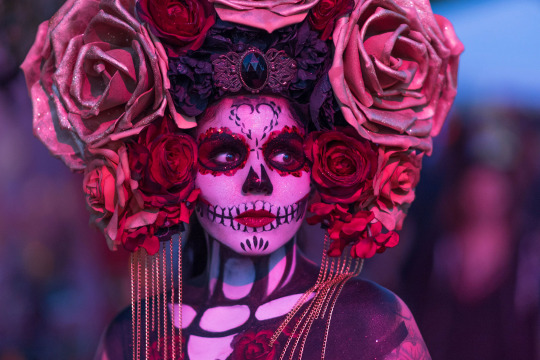

0 notes
Text
What is the Origin?
The history of Day of the Dead dates back 3,000 years ago, from rituals honoring the dead in pre-Columbian Mesoamerica. The traditions come from the Aztec belief that when someone dies, their soul goes to Chicunamictlán (the Land of the Dead), and has to make a hard journey to reach Mictlán which is the final destination. However, because this journey is so hard, families would leave offerings in order to help the souls of the dead pass over. What is known as Day of the Dead today, is an interpretation of this tradition. Some of the Catholic and Pagan rituals have also influenced traditions that take place on Day of the Dead (Castro).
0 notes